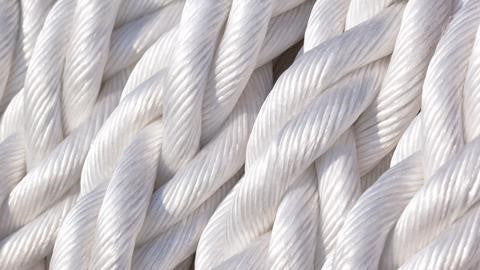
What and How: Everything about Nylon 3D Printing
Nylon is a go-to material in traditional and additive manufacturing industries due to its toughness and flexibility. When it comes to 3D printing, nylon is an “advanced” filament that requires more skills and specialized machinery. What is nylon material? How to 3D prints Nylon? We will share everything you need to know about nylon 3D printing.
What is Nylon Material?
Nylon, also called Polyamide (PA), is a kind of strong, durable and abrasion-resistant material with a high melting point and hygroscopic. It’s a thermoplastic material, meaning it can be heated and cooling multiple times for shaping without significantly affecting its inherent chemical or mechanical properties.

Nylon material was developed by Wallace Carothers, who then worked for the chemist DuPont, in 1935. It was first used to make toothbrush bristles, and then its use rapidly spread to other industries, such as the textiles industry, electronic industry, automotive industry, and so on.

There are many nylon variants, but the most common ones are Nylon6, Nylon PA6 and Nylon 12. Each variant has different characteristics that have different applications. Nylon6 and Nylon 6-6 have higher melting points, while Nylon 12 has better flexibility.
Nylon material can be 3D printed either with FDM using Nylon filament or SLS or MJF using Nylon powder.
Why 3D Print Nylon?
Nylon has become one of the most popular materials in 3D printing for professional users. Its high strength, durability, abrasion resistance lead it to a wide range of functional applications, such as gears, hinges, or other machine components that need good resistance. When printed very thin, Nylon can provide considerable flexibility while being durable.

The one major drawback of Nylon material is its moisture absorption property, which can hamper its printing performance. But the same property also helps nylon with fabric dyes and spray paints thereby.

Nylon can be easily blended with other plastics to enhance their performance. Glass-filled nylon, carbon-fiber-filled nylon are two common composites that are used in 3D printing.
3D printing provides added benefits of customization and low-volume affordability to Nylon material manufacturing.
How to succeed when 3D printing with Nylon?
There are three different technologies to 3D print Nylon, FDM, SLS, MJF. We will explain the difference between them and the pros and cons of each.
Storage of Nylon Material
Hygroscopic is a major threat to nylon material. Nylon is readily absorbing moisture from its surroundings. Even short-term exposures to high humidity can result in wet nylon, which causes printing defects.
Due to this property, nylon should be stored in a dry place and watch out for moisture. Airtight containers or Resealable vacuum bags are good choices.
FDM 3D printing Nylon Filament
FDM is a relatively more accessible way to 3D print Nylon. FDM 3D printers use nylon filaments, commonly Nylon6, to be heated, melted and then extruded onto the build platform layer by layer until the part is complete. Nylon works pretty well with an FDM 3D printer, you can print some gears or tools for daily use. But there are some problems you need to pay attention to when printing.
Due to the high melting point, the Nylon filaments require an extruder temperature of about 250°C. However, not many 3D printers, especially desktop 3D printers, can safely reach 250°C above. Make sure your printer is up for it, or you may need a specialized 3D printer with an all-metal hot end.
Another issue is caused by its hygroscopic. It always takes hours even days for an FDM printer to complete a print. Nylon filaments can be exposed to the air and absorb moisture during the printing process. The moisture absorbed by nylon gets heated and forms bubbles when passing through the heater. The bubbles burst during the heating process and leave visible gaps in the 3D-printed parts.
Professional FDM printers are enclosed so moisture can be safely avoided. But for cheaper desktop 3D printers, an extra storage unit that allows filament extruding with humidity control is required.
Last but not the least, nylon is prone to warping issues. Warping is caused by uneven cooling of the print, and the first layers curls from the build platform. To avoid warping, heat the hotbed to around 80°C so that the bottom layer of the print will be heated and stick to the bed. Using some glue, like Magigoo, is an efficient way to prevent warping. Moreover, it’s better to switch off the cooling fan when 3D printing nylon.
When it comes to setting, you should better check the filament manufacturer’s recommended setting and consider the exact printer you’re using. Here is an overview of the basic nylon 3D printing settings for reference only.
- Nozzle temperature: 240-290 °C
- Bed temperature: 70-90 °C
- Bed surface: PVA glue stick, Magigoo, Garolite, 3DLac
- Print speed: 25-50 mm/s
- Fan speed: 0-50%
- Enclosure: Recommended, but not necessary
SLS & MJF 3D printing Nylon filament
Both SLS and MJF 3D print nylon by sintering nylon powder in layers until the part is complete. SLS uses a high-powered laser as a heat source, while MJF uses a high-powered infrared light and requires a special fusing agent. Nylon11 or Nylon12 powders are commonly used in these two technologies.
The advantage of these two technologies is that, when printing, the parts are surrounded and supported by the unsintered powder, which can be partially reused. It’s more sustainable than FDM. The parts printed in these two technologies will have higher quality and greater detail.
The downside is that SLS printers are more expensive than FDM printer, while the MJF printer is the most expensive but have fastest print time and best output.

Leave a comment